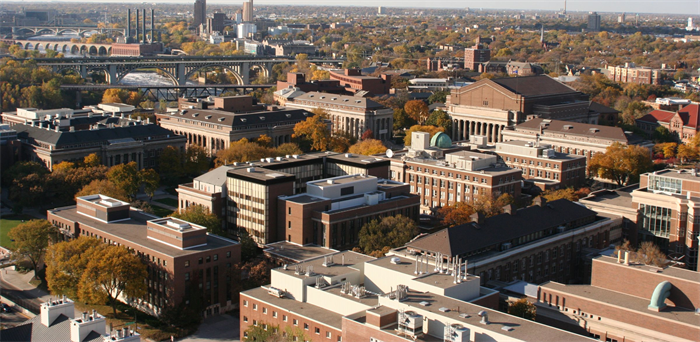Executive Director, Paul D. Wellstone Muscular Dystrophy Center – University of Minnesota School of Medicine
- Position:
- Director, Wellstone Muscular Dystrophy Center
- Specialty:
- Neurology – Muscle Disease, Neurology – Neuromuscular Medicine, Neurology – Research, Leadership
- Location:
- Minneapolis, MN
Position Overview
The University of Minnesota School of Medicine seeks a physician-scientist specializing in neuromuscular medicine and muscle disease to lead the Paul and Sheila Wellstone Muscular Dystrophy Center (MD Center). The incoming MD Center director, will implement and lead large-scale translational research projects in cooperative tandem with active ongoing clinical involvement. A key objective of the MD Center is to implement effective translational research programs driven in-part by over $60 million in grants awarded to MD Center faculty within the last 3 years.
The Wellstone MD Center faculty has doubled in size from 21 to 47 multi-disciplinary members since its inception in 2003, including principal investigators on 20 NIH grants, 2 NIH training grants and more than $25 million in total direct costs for muscle related research. This includes the largest T32 Training Program in the country for muscle research led by PI Dave Thomas, Ph.D., and the Muscular Dystrophy Center Core Laboratories, led by PI James Ervasti,Ph.D. The Wellstone MD Center one of 5 MD Centers of Excellence for Duchenne Clinical Research, is the highest funded MDA institution in the nation.
Protected time for research, as well as tenure and non-tenure track faculty appointments, is available based on interests and qualifications. The ideal candidate for this leadership role is a physician scientist with proven program-building expertise and current R01 funding or one that has shown the ability in the recent past to receive such NIH funding.
Required Qualifications
Qualified candidates will be medical doctors (MD, DO, MD/PhD, or equivalent) eligible for medical licensure in the state of Minnesota. Additional requirements include academic rank of Associate Professor or full Professor. ABPN Board certification in Neurology, with additional clinical and research expertise in the field of muscle disease and/or neuromuscular medicine.

Paul & Sheila Wellstone Muscular Dystrophy Center, University of Minnesota
The Paul and Sheila Wellstone Muscular Dystrophy Center facilitates development of clinical, translational, and basic research on muscular dystrophy, enhances and supports clinical care of patients with muscular dystrophy, improves educational experience for undergraduate, graduate, and professional students interested in the fields of basic and clinical muscle research, and increases interaction and support from the regional community of patients and families concerned about muscular dystrophy.
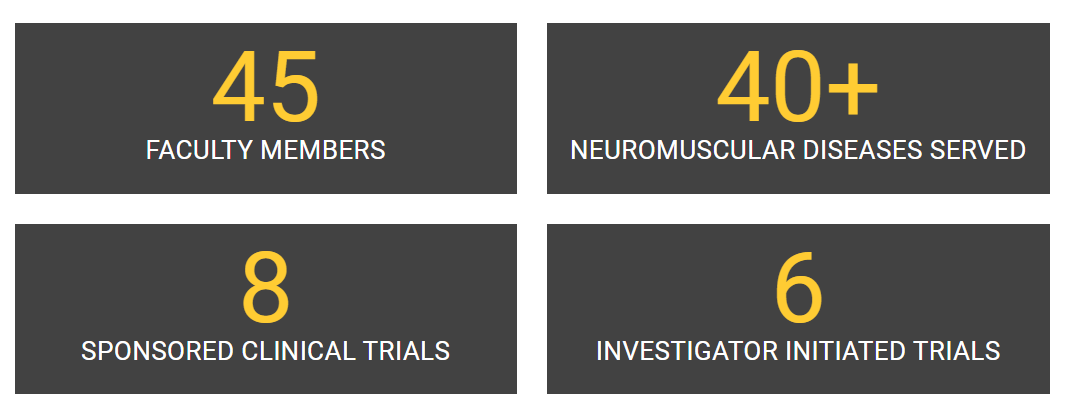
Overview
Since 1996, the MD Center’s purpose has been to improve research, clinical, and teaching activities related to muscle disease. The center is part of the Academic Health Center at the University of Minnesota, and for the past ten years has co-sponsored the Annual Muscular Dystrophy Center Symposium that attracts more than 100 researchers and participants and features distinguished, internationally recognized speakers. The MD Center faculty members have 20 NIH grants, 2 NIH training grants and more than $25 million in total direct costs for muscle related research. This includes the largest T32 Training Program in the country for muscle research led by PI Dave Thomas, Ph.D., and the Muscular Dystrophy Center Core Laboratories, led by PI James Ervasti, Ph.D.
Collaborations
The MD Center, one of 5 MD Centers of Excellence for Duchenne Clinical Research, collaborates with other educational institutions, government agencies, private sectors, and non-profit organizations to facilitate research, education, and service activities related to muscular dystrophies. The center is also home to one of only two NIH P30s and one of only two NIH P01s for Muscular Dystrophy research. The center’s collaboration with local resources such as the Muscular Dystrophy Association (MDA), Gillette Children’s Hospital, and University of Minnesota Medical Center Fairview facilitate outreach and clinical services.

Department of Neurology

Jerrold L. Vitek, MD, PhD, Professor & Chairman, Department of Neurology, University of Minnesota Medical School
The Department has a long and storied tradition of committed leadership: starting from the direction of internationally-renowned A.B Baker, MD, PhD – who was instrumental in founding the American Academy of Neurology and served as its first president in 1948 – through the current Chair, Jerrold Vitek, MD, PhD. There has been a strong commitment to providing outstanding patient care, engaging in novel and impactful scientific investigations, fulfilling the academic mission of recruiting the best, brightest and most motivated applicants and supporting their transition to independent careers as neurologists and neuroscientists. The Department of Neurology is comprised of more than 45 physician and physician scientist faculty members that provide patient care at four public teaching hospitals throughout the Twin Cities. Across the public teaching hospitals, the Department cares for more than 3,000 inpatient evaluations and 10,000 outpatient visits each year.
Since its inception in 1946, the Department has been dedicated to high quality clinical care and internationally recognized research oriented accomplishments, obtained in large measure due to the effective embracement of interdisciplinary/interdepartmental collaboration. Today, interdisciplinary collaboration crosses all major disciplines including Neurosurgery, Psychiatry, Pediatrics, Psychology, Pharmacy, Radiology/Neuroradiology, ENT, Biomedical Engineering and Neuroscience. The Department also collaborates with colleagues in the Center for Magnetic Resonance Research (CMRR), the Institute of Human Genetics, the Division of Epidemiology and Community Health (School of Public Health), and the Brain Sciences Center and Geriatric Research and Education Clinical Center (GRECC) at the Minneapolis VA Medical Centers. Additionally, a new program in vestibular and balance disorders is being developed and will be interdisciplinary oriented.
Research & Teaching
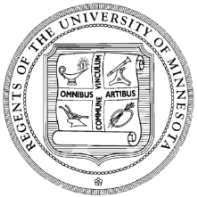 The University of Minnesota is a world-class research institution with a well-established medical school that dates back to 1888. The University pioneered medical discoveries like the first external pacemaker, the first successful bone marrow transplant, the first successful open-heart surgery, and the world’s first stem cell institute. The University of Minnesota’s Twin Cities campus also ranked No. 8 in public research institutions in the United States based on the Center for Measuring University Performance (CMUP)’s 2013 report.
The University of Minnesota is a world-class research institution with a well-established medical school that dates back to 1888. The University pioneered medical discoveries like the first external pacemaker, the first successful bone marrow transplant, the first successful open-heart surgery, and the world’s first stem cell institute. The University of Minnesota’s Twin Cities campus also ranked No. 8 in public research institutions in the United States based on the Center for Measuring University Performance (CMUP)’s 2013 report.
Research is a critical element in the fight against neurological disease; it paves the way for the development and implementation of new therapies and provides opportunities to expand our academic mission. Our physicians pioneer new surgical therapies for Parkinson’s disease and dystonia and the application of deep brain stimulation for movement and psychiatric disorders, and multidisciplinary studies in diseases of muscle and nerve with a world-class Center for Magnetic Resonance Imaging illustrate the critical role played by research in the delivery of clinical care.
The academic faculty are distributed among four public teaching hospitals: the University of Minnesota Medical Center, Fairview (UMMC); Hennepin County Medical Center (HCMC); the Minneapolis Veterans Administration Hospital (VAMC); and Regions Medical Center (Regions). Diverse patient populations constitute a major strength of our clinical, research and training programs. Across the public teaching hospitals, the Department cares for more than 1,000 neurology inpatients per year, provides 2,000 inpatient consultations, and accounts for 10,000 outpatient visits.
Neurosciences and Research at the U
Institute for Translational Neuroscience (ITN)
The Institute for Translational Neuroscience (ITN) was established in 2007 as a University-wide presidential initiative to promote the transfer of discoveries in the basic neurosciences to clinical practice. The institute is charged to enhance basic science discovery with new knowledge leading to subsequent clinical trials and establishment of new therapeutic principles or tools.
The ITN grew out of the University of Minnesota Presidential Initiative on Brain Function across the Lifespan. It was advanced by the external review of neuroscience in February 2006 and by the work of a Leadership Advisory Committee, chaired by Deborah Powell in her capacity as the former assistant vice president for clinical sciences, that worked from July through December 2006.
In February 2007, Frank Cerra, former senior vice president for health sciences officially inaugurated the institute. In his charge to the institute’s steering committee, he outlined four thematic areas that seek to connect basic neuroscientific discovery to improving clinical care and new treatments and therapies. The four areas are: neuroengineering, neurodevelopment and mental health, neurodegenerative and neuromuscular diseases, and memory research and care. Since 2011, the four areas have evolved to include imaging via the high powered magnets in the Center for Magnetic Resonance Research. These themes represent the breadth of strength and opportunity in the translational neurosciences across the University.
Biomedical Discovery District
The Biomedical Discovery District (BDD) is a complex of research buildings designed to allow researchers from across the Academic Health Center to work side-by-side in order to find cures, treatments, and prevention of diseases. The various facilities are comprised of state-of-the-art space to fight today’s health challenges. Each facility hosts basic and translational research areas that span from hearing, vision, and stem cells to infectious disease, neuroscience, and immunology. The newest facility opened in 2013 and hosts cancer and cardiovascular research.
Center for Magnetic Resonance Research (CMRR)
Established in 1991, the CMRR is an interdepartmental and interdisciplinary research laboratory that provides state-of-the-art instrumentation, expertise, and infrastructure to carry out biomedical research utilizing the unique capabilities provided by high field MRI and MRS methodology.
The central aim of the research conducted in CMRR is to non-invasively obtain functional, physiological, and biochemical information in intact biological systems, and use this capability to probe biological processes in health and disease. Which focuses on the development of unique magnetic resonance imaging and spectroscopy methodologies and instrumentation for the acquisition of structural, functional, and biochemical information non-invasively in humans, and utilizing this capability to investigate organ function in health and disease.
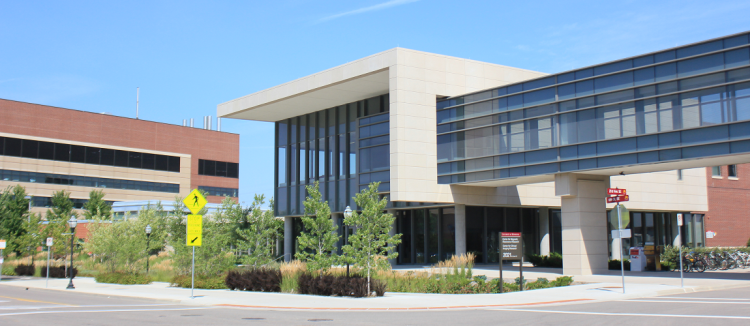
Funded by the NIH as a Biotechnology Research Resource for High field Magnetic Resonance Imaging and Spectroscopy, and supported by numerous governmental and private foundations, CMRR core faculty have made significant and pioneering contributions in biological applications of magnetic resonance techniques, and possess unique expertise in very high field uses of this methodology.
CMRR faculty conducts research in a variety of areas including:
- High field functional brain mapping in humans; methodological developments, mechanistic studies, and neuroscience applications
- Metabolism, bioenergetics, and perfusion studies of human pathological states (tumors, obesity, diabetes, hepatic encephalopathy, cystic fibrosis, and psychiatric disorders
- Cardiac bioenergetics under normal and pathological conditions
- Automated magnetic field shimming methods that are critical for spectroscopy and ultrafast imaging at high magnetic fields
- Development of high field magnetic resonance imaging and spectroscopy techniques for anatomic, physiologic, metabolic, and functional studies in humans and animal models
- Radiofrequency (RF) pulse design based on adiabatic principles
- Development of magnetic resonance hardware for high fields (e.g. RF coils, pre-amplifiers, digital receivers, phased arrays, etc.)
- Development of software for data analysis and display for functional brain mapping.
Resources include:
- 10.5 Tesla / 89 cm Bore system for human studies (world’s largest)
- 16.4 Tesla for animal model studies
- 9.5 (2) Tesla for animal model studies
- 7 Tesla (shielded MR System for Human Studies; eye tracking)
- Cyclotron – Siemens PETNET
- 17.0 Tesla 5cm Vertical Bore
- 4 Tesla for human studies
- Siemens Inveon preclinical microPET/CT
- 3 Tesla (multiple, w/advanced imaging)

17 Tesla 5cm Vertical Bore
Neuromodulation Research Center and Lab (NRCL)
The Center for Neuroengineering (CNE) was established in 2007 to enhance neuroengineering research at the University of Minnesota as part of the Institute for Translational Neuroscience. The CNE is now also affiliated with the Institute for Engineering in Medicine. Bridging neuroscience and engineering, neuroeingineering is an emerging field that translates research discoveries into neuro-technologies that provide new and powerful tools for basic and clinical neuroscience research and lead to enhanced patient care. For example, developments in brain-machine interface (BMI) technology exemplify the dramatic progress and potential of neuroengineering. Another successful example is Deep Brain Stimulation (DBS), in which functional electrical stimulation has been demonstrated to treat patients with Parkinson’s disease and a host of other nervous system disorders. These two examples demonstrate the feasibility of translating neuroscience findings into technologies that can directly impact patient care.
The NRCL develops multi-scale computational neuron models to further understanding of the biophysical and physiological mechanisms of neuromodulation. In partnership with the Minnesota Supercomputing Institute, the NRCL couples finite element models of electric fields generated in neural tissue with computational neuron models built from sets of mathematical equations that replicate the biophysical properties of membrane and synapse dynamics.
The NRCL also investigates the therapeutic mechanisms of neuromodulation experimentally through multi-channel electrophysiological and neurochemical techniques in animal models of movement disorders. The NRCL is particularly interested to determine how neurons encoding movement are modulated during deep brain stimulation, how stimulation at different therapeutic efficacies influences these neurons, and how the modulation of neuronal firing patterns changes during chronic stimulation.
The NRCL is developing new types of implants and stimulation strategies that are inspired by the underlying neuroscience. The NRCL evaluates these technologies with the goal of leveraging industrial partnerships to translate these therapies from the laboratory to the clinic.
The University of Minnesota has strong, highly recognized research groups in engineering and neuroscience that provide the underpinning for an initiative in neuroengineering. Coupled with the strong medical device industry in Minnesota, the University is uniquely positioned to seize this opportunity to enhance neuroengineering research and translate findings into new technologies and products. The CNE is aimed at bringing together and building upon the rich existing strengths at the University of Minnesota to address the unique opportunity in the emerging field of neuroengineering. The CNE has identified thrust areas of interdisciplinary research and training in neural interfacing and modulation, neuroimaging, and neural computation. The CNE will offer an opportunity to foster on-campus collaborations among faculty in the basic sciences, engineering, and clinical departments as well as collaborations with the biomedical industry.
Center for Neurodegenerative Disease
The overarching goal of the Center for Neurodegenerative Disease is to bring together researchers that have synergistic strengths in basic movement disorder-oriented neuroscience research, and clinical neurosciences. In addition, these researchers collaborate with several different groups including the NINDS Institutional Center Core grant, the Bob Allison Ataxia Research Center, and the Paul and Sheila Wellstone Muscular Dystrophy Center.
N. Bud Grossman Center for Memory Research and Care
The N. Bud Grossman Center for Memory Research and Care is a tripartite endeavor encompassing basic, translational, and clinical research on memory disorders. Our goal is to relieve the suffering caused by Alzheimer’s disease. We are working towards safe and affordable prevention strategies and comprehensive care and support for people with memory problems and their families. In order to achieve this goal, we have brought together scientists, physicians and health care workers.
We are one of four centers within the Institute for Translational Neuroscience (ITN), administered within the Medical School which is a division of the Academic Health Center at the University of Minnesota. The center members are drawn from the Departments of Neurology, Neuroscience, and Psychiatry. Our center has strong ties to the Minneapolis Veterans Affairs Health System, Geriatric Research, Education and Clinical Center (VA GRECC) where some faculty have joint appointments and some of our research is performed.
Stem Cell Institute

Established in 1999, the Stem Cell Institute is the first interdisciplinary institute in the United States dedicated to stem cell research. The Institute’s vision is to use stem cell biology to change the practice of medicine through discovery, education, and translation. The researchers and faculty of the SCI explore the science of stem cell biology with the purposes of responding to the medical needs of today and educating the researchers of tomorrow, and together have 16 US patents. The Institute draws together 50 investigators from 22 University departments to participate in stem cell research targeting 5 primary diseases: cancer, diabetes, heart disease, neurological disorders, and inherited disorders.
Genomics Center
The University of Minnesota Genomics Center (UMGC) provides genomics research services committed to advancing genomics in Minnesota. The UMGC maintains and acquires state-of-the-art instrumentation and offers an array of services including sequencing, expression, genotyping, nucleic acid extraction, and related support. We strive to keep pace with the ever-broadening world of “omics” technologies (genomics, epigenomics, metabolomics), and to expand our role at the University and the wider biotech community.
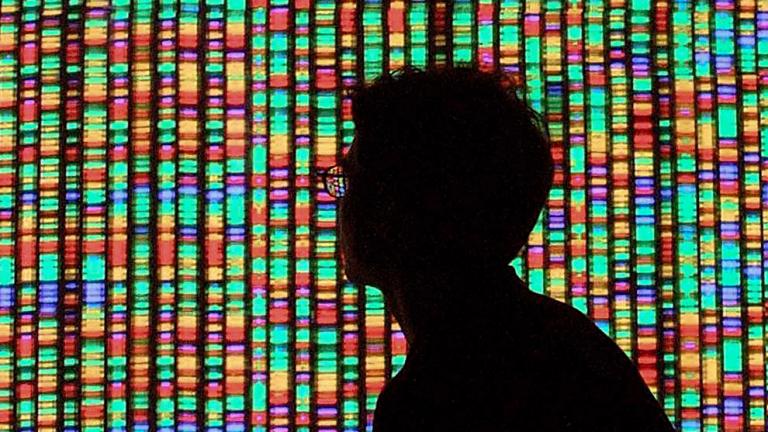
The center provides genomics research services for UMN investigators and external companies. Although the primary goal of the UMGC is to provide a diverse portfolio of research services to UMN investigators, we also have a mandate to translate discoveries in genomics to the founding of knowledge-based companies in the State of Minnesota. Additionally, the center assesses and acquires emerging technologies to drive the expansion of biomedical and agricultural research. Genomics technologies evolve at a rapid pace. The efficient and well-planned evaluation and acquisition of new instrumentation is paramount in maintaining a competitive advantage for UMN researchers and external clients.
MN Drive
Minnesota’s Discovery, Research, and Innovation Economy is a landmark partnership between the University and the state of Minnesota that aligns areas of University research strength with the state’s key and emerging industries to address grand challenges. In 2013, the Minnesota Legislature authorized an $18 million recurring annual investment in four research areas identified by University faculty, deans, and corporate partners as the most promising areas for partnership: Robotics, Global Food, Environment and Brain Conditions. The University of Minnesota Informatics Institute (UMII), which fosters and accelerates data-intensive research, receives partial funding from MnDRIVE and provides key support to these projects.
MnDRIVE represents a unique, collaborative research model involving interdisciplinary research projects across the University that address grand challenges and include industry partnerships as a key component. Funding proposals for the four areas of research undergo a rigorous peer review process by a strategic advisory board consisting of representatives from academia, industry and the broader community.
The Office of the Vice President for Research provides accountability measures for the initiative and serves as an advocate for the program at the Legislature. The Vice President for Research also oversees the Transdisciplinary Research Program. Each of the four research areas have committees and advisory boards to oversee project implementation and outreach.
Metrics are tracked and reported across all four areas to assess the impact of MnDRIVE research, education and industry relationships on economic development and quality of life for Minnesotans. To date, MnDRIVE funding has supported 210 projects, produced 41 potential patents or licenses, created 321 jobs and forged more than 75 external partnerships with companies throughout the state, many of which are in the food and agricultural sector.
Human Connectome Project
 Mapping of the human connectome offers a unique opportunity to understand the complete details of neural connectivity (Sporns et al., 2005, Wedeen et al., 2008, Hagmann et al., 2007). The Human Connectome Project (HCP) is a project to construct a map of the complete structural and functional neural connections in vivo within and across individuals. The HCP represents the first large-scale attempt to collect and share data of a scope and detail sufficient to begin the process of addressing deeply fundamental questions about human connectional anatomy and variation.
Mapping of the human connectome offers a unique opportunity to understand the complete details of neural connectivity (Sporns et al., 2005, Wedeen et al., 2008, Hagmann et al., 2007). The Human Connectome Project (HCP) is a project to construct a map of the complete structural and functional neural connections in vivo within and across individuals. The HCP represents the first large-scale attempt to collect and share data of a scope and detail sufficient to begin the process of addressing deeply fundamental questions about human connectional anatomy and variation.
The grants ($40m) are the first awarded under the Human Connectome Project. They will support two collaborating research consortia. The first will be led by researchers at Washington University, St. Louis, and the University of Minnesota, Twin Cities. The other will be led by investigators at Massachusetts General Hospital (MGH)/Harvard University, Boston, and the University of California Los Angeles (UCLA).
Mapping the human brain is one of the great scientific challenges of the 21st century. The Human Connectome Project (HCP) is tackling a key aspect of this challenge by elucidating the neural pathways that underlie brain function and behavior. Deciphering this amazingly complex wiring diagram will reveal much about what makes us uniquely human and what makes every person different from all others.
The consortium led by Washington University, University of Minnesota, and Oxford University (the WU-Minn HCP consortium) is comprehensively mapping human brain circuitry in a target number of 1200 healthy adults using cutting-edge methods of noninvasive neuroimaging. It will yield invaluable information about brain connectivity, its relationship to behavior, and the contributions of genetic and environmental factors to individual differences in brain circuitry and behavior.
The Washington U./Minnesota team will map the connectomes in each of 1,200 healthy adults — twin pairs and their siblings from 300 families. The maps will show the anatomical and functional connections between parts of the brain for each individual, and will be related to behavioral test data. Comparing the connectomes and genetic data of genetically identical twins with fraternal twins will reveal the relative contributions of genes and environment in shaping brain circuitry and pinpoint relevant genetic variation. The maps will also shed light on how brain networks are organized.
Successful charting of the human connectome in healthy adults will pave the way for future studies of brain circuitry during development and aging and in numerous brain disorders. In short, it will transform our understanding of the human brain in health and disease.
Partnership with Industry
University of Minnesota expands MN-IP program to promote industry partnerships and boost regional economies

To promote technology partnerships with U.S. and Minnesota-based companies, improve access to university-developed technology and boost regional economies the University of Minnesota announced today it is expanding the Minnesota Innovation Partnerships (MN-IP) program to provide easy access to already-developed University technologies and solutions.
Initiated in 2011, MN-IP lowers the cost and risk companies face when sponsoring university research. The original version of the program, now called MN-IP Create, streamlines the process of sponsoring research and licensing intellectual property (IP). It establishes industry-friendly terms up front, granting companies an exclusive worldwide license to the resulting IP. To date, MN-IP Create has resulted in 83 partnerships to develop products and services across industries including biotechnology, pharmaceuticals and medical devices. The industry partners range from small Minnesota startups to large multinational companies.
As part of the MN-IP program expansion, the university today is introducing MN-IP Try and Buy. Try and Buy was developed to provide companies a low-cost, low-risk method to determine the commercial potential behind existing university-developed technologies. Companies will be able to take available technologies for a “test-run” or use them fee-free (if qualified) to test the viability of the innovation for their company. The new program grants companies a low-cost agreement to analyze technology under pre-negotiated licensing terms for a trial period without incurring any U.S. patent costs until a patent issues, and without paying royalties on the first $1 million in revenue. One of the highlights of the new program is the discount allotted to Minnesota companies which reduces fees for the trial period as well as royalty rates for the license
The MN-IP program is part of the university’s ongoing efforts to work more effectively with the business community, and the complementary programs within MN-IP are designed to help set the conditions for economic development, including the creation of new products and jobs, and allow industry to access the university’s researchers and facilities.
The White House’s Office of Science and Technology Policy recently recognized the program for fostering university-industry partnerships and strengthening the United States’ economic competitiveness. “[MN-IP] and other models … promise to help foster university-industry partnerships and strengthen America’s economic competitiveness.”
U of M Selected as Hub for NIH Program to Accelerate New Inventions to the Market
The University of Minnesota has been selected by the National Institutes of Health as one of three Research Evaluation and Commercialization Hub (REACH) sites nationally to establish a university-wide strategic framework promoting commercialization and technology transfer in the life sciences and biomedical technology.

Supported by a $3 million NIH grant with another $3 million in matching U of M funds, the U’s MINREACH program will provide commercial expertise and resources needed for the development and commercialization of diagnostics, therapeutics, preventive medicine and medical devices. Vadim Gurvich, associate director of the college’s Institute for Therapeutics Discovery and Development, will co-lead the pharmaceutical side of the program.
The program will establish new industry partnerships, strengthen existing partnerships, and provide entrepreneurial, commercial-style education for innovators to accelerate the pace at which innovations reach the marketplace. It will fund between 10-20 research projects a year. Under the program, workshops and industry mentors will coach faculty in key aspects of commercialization, including subjects like competition, venture capital and market assessment. Meanwhile, the program will identify and address barriers in the academic environment that may hinder commercialization.
MIN-REACH builds upon several existing, nationally recognized programs at the U designed to advance sponsored research and technology commercialization, including Minnesota Innovation Partnerships (MNIP), Discovery Capital and MINCorps, an NSF-funded program that promotes student entrepreneurship in science and engineering. MIN-REACH will also build upon Minnesota’s long history of success in medical innovation, as the state is home to the top 17 publicly traded medical device companies in the U.S. At the U of M, medical innovations are among the most prominent inventions of the U’s commercialization portfolio.
Twin Cities

The University of Minnesota is located in the Twin Cities of Minneapolis and St. Paul, the birth place and headquarters of the American Academy of Neurology (AAN). Four key attributes sets the Minneapolis-Saint Paul region apart: a resilient, diverse economy anchored by 17 Fortune 500 companies, a penchant for innovation, a highly educated workforce – one of the best in the nation and an outstanding quality of life.
The Minneapolis-Saint Paul area is cosmopolitan at its heart and small town along its perimeter. The Twin Cities is the 16th largest metro area in the US, with a population of approximately 3.4 million people. It is the 2nd largest economic center in the Midwest, behind Chicago, and the second largest medical device manufacture center in North America. Minneapolis proper contains the 5th highest concentration of Fortune 500 companies in the country. The presence of the corporate headquarters for companies such as Target, US Bancorp, Xcel Energy and Ameriprise Financial provide a growing economy with great job opportunities for a candidate’s spouse or family. Additionally, an exciting arts and music scene, exceptional shopping, award-winning restaurants, wineries and craft breweries, and distinctive accommodations can be found throughout the area. Outdoor enthusiasts find plenty to do – even when temperatures dip, the variety of fun outdoor adventures does not. Sports fans cheer on their favorite team year-around. Big city bustle or small town charm, anyone can find the activity that suits them in the Minneapolis – Saint Paul Area.


